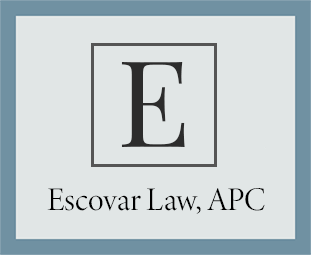A vehicle collision is an unexpected, traumatic, and inconvenient event which oftentimes results in bodily injury to the drivers and other passengers involved in the collision. Those injured as a result of negligent driving by another party may seek to pursue a claim for compensation against the at-fault party for the bodily injury damages, pain, and suffering that the collision caused them. In order to maximize future compensation and to ensure that the right party is found at-fault for the collision, it is important to be mindful of a few initial steps that should be taken at the scene of the collision by the not-at-fault party.
First, if possible and depending on the extent of your injuries and the injuries to the other involved parties, exchange information with the driver(s) of the other vehicle(s) involved in the collision. You should seek to obtain the name and address of the other driver(s) and you should seek to take a photograph of the other driver(s) vehicle registration and driver’s license. This information should contain the other driver(s) insurance information, which will be necessary to initiate a formal claim for damages against the driver’s insurance company.
While at the collision site, you should also seek to photograph the scene of the collision. This will include the road conditions, the weather at the time of the accident, the intersection the accident occurred at, and the state and location of the vehicles. These photographs can later be used to show the impact of the collision and the extent of damage to the vehicles. These photographs can also be useful to document how the collision occurred to make sure that liability is imposed on the correct at-fault party.
If law enforcement is called to the scene of the collision, make sure to document the name and badge number of the responding officer. If possible, ask for a business card from the officer that will be taking the “Collision Report” and a report number so that you, or your attorney, can later request a copy of the “Collision Report.” The “Collision Report” written by law enforcement typically describes the parties involved in the collision, the insurance information for the drivers, road conditions at the time of the accident, weather conditions, a summary of the accident, witness statements, and apportions fault to the driver responsible for causing the collision. This report can then be used to argue to the at-fault driver’s insurance company that their insured was liable for the collision. Witness statements taken by law enforcement can also be useful to demonstrate any extenuating circumstances that contributed to the at-fault party’s negligence, such as texting, talking on a cellphone, or other distracted driving behavior.
You will also want to take photographs of any visible injuries that you have sustained as a result of the collision. These photographs can later be used to show the pain and suffering that you experienced from the collision.
After leaving the scene of the collision, if you have determined that you are injured from the collision and want to pursue a bodily injury claim, first seek all necessary medical attention and then contact an attorney to assist you with initiating a claim against the defendant’s insurance or to proceed with contacting the defendant’s insurance company on your own. The insurance company will then investigate the claim and make a liability determination.
If you need assistance with seeking a bodily injury claim or you have any questions, please our office at 626-577-7700.
DISCLAIMER:
The information in this blog post (“post”) is provided for general informational purposes only, and may not reflect the current law in your jurisdiction. No information contained in this post should be construed as legal advice from Escovar Law, APC or the individual author, nor is it intended to be a substitute for legal counsel on any subject matter. No reader of this post should act or refrain from acting on the basis of any information included in, or accessible through, this Post without seeking the appropriate legal or other professional advice on the particular facts and circumstances at issue from a lawyer licensed in the recipient’s state, country or other appropriate licensing jurisdiction. The information on this website is a communication and is for informational purposes only. The facts of every case are unique and nothing on this page or on this website should be taken as legal advice for any individual case or situation. The information on this website is not intended to create an attorney-client relationship and viewing of this information does not create an attorney-client relationship. The result portrayed in this advertisement was dependent on the facts of this case. Results will differ if based on different facts.

